FY 2023-24 presented a dynamic environment for the aluminium market. While the early part of the year witnessed LME prices adjusting to US$ 2,100/tonne by June 2023 due to global macroeconomic factors, the market demonstrated resilience. Despite ongoing geopolitical tensions and economic headwinds, including the ongoing Russia-Ukraine war, the European energy crisis, and global inflation, metal prices remained relatively stable throughout most of the year. This stability reflects the continued robust underlying demand for aluminium across various sectors. A brief price increase in the latter part of the calendar year, particularly in December 2023, likely driven by concerns about potential sanctions on Russian metal, further underscored the market's sensitivity to supply disruptions. However, prices ultimately returned to around US$ 2,200/tonne by year-end, demonstrating a degree of market stability.
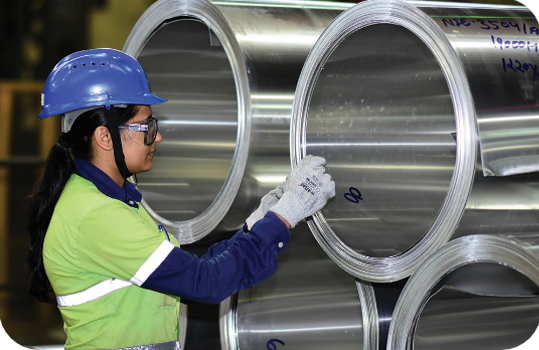
In CY2023, global primary aluminium production remained flat at ~70.0 million tonnes, while demand also stagnated at 69.8 million tonnes, resulting in a global surplus of 0.2 million tonnes. Excluding China, production and consumption of aluminium remained stable. In India, the domestic demand surged 17% from ~4.6 million tonnes in FY 2022-23 to ~5 million tonnes in FY 2023-24.
Vedanta is India’s largest primary aluminium producer with an annual capacity of ~2.4 million tonnes. The Company’s product portfolio includes aluminium ingots, primary foundry alloys, wire rods, billets, and rolled products which cater to varied industries globally such as energy, transportation, construction and packaging, aerospace and defence, among others. It has achieved a domestic market share of 46% as of 31 March 2024 after its domestic sales volume increased by ~25% in FY 2023-24.
In line with the evolving market needs and the focus on value creation through expanding margins, the Company has been steadily increasing its value-added product (VAP) share in the portfolio which currently accounts for ~45% of its total global aluminium sales.
The global aluminium market is on an exciting growth trajectory, with annual demand projected to reach 122 million tonnes by CY 2030. The demand is expected to increase at a CAGR of ~3%, driven by the global push for decarbonisation. Aluminium's lightweight, corrosion resistance, electrical conductivity and recyclable nature make it an ideal material for clean energy solutions, with sectors like renewable energy and electric vehicles expected to consume a substantial 16 million tonnes by 2030. Furthermore, increased investment in infrastructure development will create another avenue for aluminium demand.
China, the world's largest aluminium consumer, shows promising signs of continued domestic consumption growth. However, its long-term success hinges on sustained growth in the transportation sector and modest recovery of the building and construction industry. For the Rest of the World (RoW), CY 2024 is expected to bring a modest increase in demand as inflation rates decline, enabling acceleration in the rate of investment.
Meanwhile, India stands out with a robust domestic demand outlook, projecting growth of over 10% for FY 2024-25. Key sectors like electronics, appliances, and anticipated growth in renewables, defence, and aerospace will continue to drive aluminium consumption in the country.
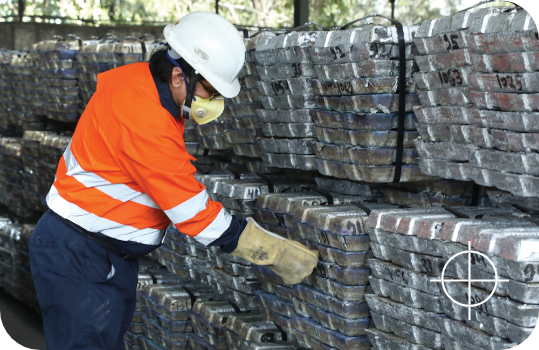
In FY 2023-24, the zinc market navigated a dynamic landscape marked by fluctuating LME prices. Early price corrections saw a dip from US$ 2,900/tonne in April 2023 to US$ 2,300/tonne in June 2023. However, the market demonstrated remarkable resilience by stabilising in the latter half of the year. This stability came in the form of a range-bound pattern supported by rising LME inventories. The year concluded with a healthy average LME price of US$ 2,475/tonne, showcasing the market's ability to adapt to changing conditions.
On the supply and demand side, FY 2023-24 witnessed a modest 1% increase in global production of refined zinc, reaching 13.6 million tonnes. While global demand plateaued at 13.5 million tonnes, primarily due to reduced consumption in some regions, the market effectively adjusted. This adjustment involved an increase in warehouse stocks, which mitigated spot metal premiums and provided a buffer against price volatility. The market's resilience was further tested by factors like subdued demand from China and persistent global interest rate hikes. However, positive anticipation surrounding Chinese economic stimulus measures instilled intermittent market optimism. The latter part of the year saw adjustments due to concerns over China's recovery and rising inventories, highlighting the market's responsiveness to external influences.
In contrast to these global trends, India emerged as a bright spot in zinc demand. The country experienced a robust 17% Y-O-Y surge in FY 2023-24, fuelled by strong economic policies and a focus on infrastructural development. This growth trajectory serves as a testament to India's growing industrial prowess and the government's commitment to building a robust infrastructure network.
Hindustan Zinc Limited (HZL), a leader in the Indian zinc market, holds the distinction of being the country's largest and only primary zinc producer. With a commanding 75% market share in FY 2023-24, HZL plays a pivotal role in driving the industry forward. The Company's domestic sales success story reflects the thriving Indian market, with a remarkable 20% Y-O-Y growth in FY 2023-24, reaching a record-breaking 580 kt of sales. HZL is strategically expanding its product portfolio, evident in its historically high sales of 161 kt of value-added products (VAP) in FY 2023‑24. This diversification from 15% to 20% VAP demonstrates HZL's commitment to cater to the evolving needs of the market. Aligning with the positive momentum in the zinc market, HZL projects a 20% Y-O-Y increase in domestic sales for FY 2024-25, marking a historic high, further bolstered by an expanded Value-Added Products (VAP) portfolio.
The global zinc market is poised for continued growth in FY 2024-25. Global refined zinc production is projected to rise by 1.53% to approximately 13.9 million tonnes, while consumption is expected to grow by 2.3% to 13.8 million tonnes. The People's Bank of China's proactive measures, such as the reduction in the Reserve Requirement Ratio, signal a commitment to economic revitalisation. This, coupled with the anticipated easing of US interest rates and a potential 3% increase in Chinese zinc consumption in 2024, suggests a favourable environment for zinc prices and broader economic health.
The Indian zinc market is particularly well-positioned for significant growth, with an estimated 19% Y-O-Y increase projected for FY 2024-25. This growth is driven by the government's consistent push for infrastructure development, urbanisation and industrialisation, which will create significant demand for zinc-intensive materials. India's leadership in steel production and the strong growth observed in the Index of Industrial Production (IIP) and Manufacturing PMI numbers further underscore a thriving economy with a growing appetite for zinc. Positive market sentiments continue to prevail in India, driven by the nation's comprehensive growth across sectors like construction, electricity, and automotive. This growth fuels zinc demand, leading to a projected expansion of the Indian zinc market by 5.2% to 810 kt in FY 2024‑25
Global lead market exhibited remarkable resilience despite macroeconomic headwinds in FY 2023-24. Global lead prices averaged a healthy US$ 2,121/t, reflecting a slight increase from FY 2022-23. However, downward pressure emerged towards the second half of the year. This correction was mainly driven by two key factors, subdued demand growth in developed economies (USA, EU, China) due to high inflation and rising interest rates, and an increase in refined lead production reaching 13.8 million tonnes in FY 2023‑24 (1.8% increase). This imbalance between mined and refined lead output and demand led to temporary metal surpluses, suppressing prices. LME and SHFE warehouse inventories saw a significant rise in Q4 FY 2023‑24, further impacting prices.
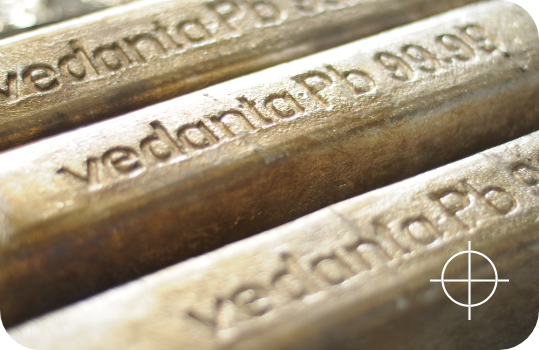
India presented a contrasting picture compared to the global market. Primary lead demand in FY 2023-24 reached an estimated 199 kt, marking a slight decrease from the previous year. This is primarily attributed to the increased consumption of secondary lead and alternative materials. Interestingly, the Indian auto industry defied the global trend with a robust 10% Y-O-Y growth. The EV segment exceeded expectations, with BEV sales experiencing a phenomenal 100% increase in FY 2023‑24.
Hindustan Zinc Limited (HZL) proudly stands as a premier lead producer in India, commanding an impressive 66% market share in the primary market in FY 2023-24. Its commitment to quality is reflected in its production of high‑grade lead ingots with a purity level of 99.99%, which has earned the distinction of being registered with the London Metal Exchange (LME). During the fiscal year, a significant 63% of the Company’s output catered to the increasing domestic demand, while the remainder was exported to international markets. Moving forward, the Company’s strategy is geared towards deepening its footprint across India. It aims to amplify domestic sales to 100%, leveraging its vigorous customer acquisition initiatives and the development of innovative applications. This underscores its dedication to nurturing the Indian market and its confidence in its growth potential.
Looking ahead, the lead market is expected to witness a more balanced supply-demand scenario in FY 2024‑25. Global supply is projected to increase by 1.3% to 14.1 million tonnes, while demand is anticipated to reach 14.1 million tonnes, reflecting a 1.7% growth.
Globally, lead-acid batteries, despite facing competition from substitutes in the evolving EV landscape, will continue to be crucial for powering essential electrical systems in these vehicles, contributing to lead demand. Additionally, the global transition towards sustainable solutions will drive the adoption of lead-acid batteries for renewable energy storage systems.
The Indian market is expected to benefit from its buoyant economic growth and rising vehicle population, leading to continued strong lead demand. Furthermore, growth in Battery Energy Storage Systems (BESS) deployments will create significant lead demand opportunities as the contribution of renewable energy to the grid increases.
Government initiatives like FAME-II and Electric Mobility Promotion Scheme 2024 (EMPS 2024), promoting the adoption of electric vehicles (EVs), will further solidify domestic lead demand. The automotive sector, projected to grow by 6.4% in India until 2031, will remain a key driver due to its reliance on lead-acid batteries and inverter batteries. Additionally, government stimulus programmes and strong export demand for lead intensive products like galvanised sheets are expected to indirectly drive lead consumption through its role as a by-product of zinc mining.
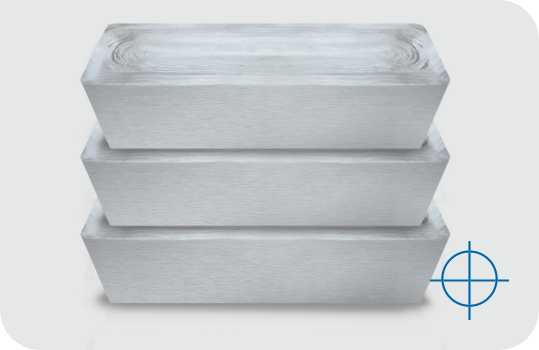
The silver market showcased a stellar performance in FY 2023-24, overcoming initial price volatility to ultimately deliver a year marked by growth. LBMA prices commenced robustly at US$ 23.8/oz but underwent a period of consolidation. Despite these fluctuations, the market found stable ground, culminating in a commendable 10% Y-O-Y increase, with an average price of US$ 23.55/oz. This positive trend was underscored by silver prices performing strongly in the closing month of March 2023.
Globally, the silver supply experienced a notable 5% increase in CY 2023, reaching an estimated 1.055 billion ounces (Boz). This expansion is largely credited to a 5% surge in mine production, propelled by the inauguration of new mining operations in Mexico and enhanced silver yields from Chilean gold mines. Moreover, silver recycling made a significant contribution, adding ~200 million ounces to the total supply.
On the demand front, global silver consumption soared to a near-record 1.15 Boz, reaffirming its status as the second-highest level in history. Despite a modest downturn in jewellery and silverware sectors, this was compensated by the industrial sector’s robust performance. Industrial silver demand, projected to have grown by 4%, reached an unprecedented 576 Moz. This increase is attributed to the escalating application of silver in vehicle electrification and the development of essential charging infrastructure.
Hindustan Zinc (HZL), a key player in the global silver arena, continues to exert a major influence. Ranking as the world’s 5th largest silver producer, HZL recorded a historic high in domestic sales, reaching 740 kt in FY 2023-24, marking a 4% increase from the previous year. With an eye on the increasing demand for silver, HZL is strategically augmenting its production capabilities to cater to the expanding market needs.
Looking ahead, the prospects for silver are even brighter with an estimated 1.2 Boz silver demand in FY 2024-25. The overall demand is being driven by several factors:
The year 2024 has witnessed a moderate increase in the global oil supply, primarily driven by non-OPEC countries, with the United States and Brazil leading the charge. The global oil demand has followed an upward trajectory, with an estimated increase of 1.3 million barrels per day (mbpd), reflecting the ongoing economic recovery. This demand is primarily driven by non-OECD countries. A steady increase in transportation and industrial fuel demand, supported by the recovery in economic activity in China and other non-OECD regions boosted the demand.
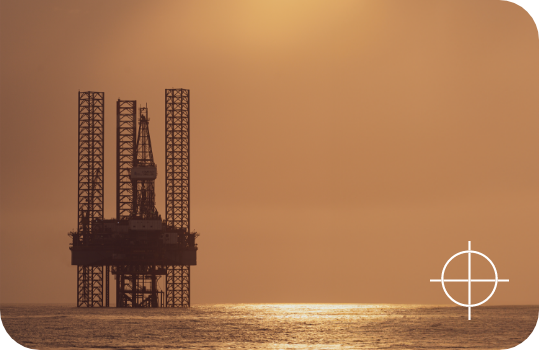
India’s oil demand in CY 2023 increased to 5.34 Mb/d (+0.21 Mb/d). In the near term, India’s economic growth is expected to remain robust on the back of strong domestic demand, ongoing economic and business activities, proactive government policy measures, and increased capital expenditure for sustainable infrastructure development, which is expected to boost India’s oil demand in H12024.
During the year, the average crude oil price stood at US$ 82.6/bbl in CY2023, an 18% drop compared to CY2022. This decline in crude price vis-à-vis CY2022 can be attributed to the potential easing of sanctions imposed by G7 nations due to the Russia-Ukraine war. The major drivers of oil prices in CY2023 were the OPEC+ production cuts and the Israel- Hamas conflict in Gaza that heightened the tensions in the Middle East with ongoing maritime disruptions in the Red Sea. Apart from this, concerns about the weaker economic outlook of major economies also impacted the prices.
Cairn India is the largest private oil & gas exploration and production company in India with gross proven and probable R&R of 1,376 million barrels of oil equivalent (Mmboe). The Company’s crude oil is sold to public and private refineries and its natural gas is consumed by the fertiliser industry and the city gas distribution sector in India. The Company’s entire crude oil and natural gas production in FY 2023-24 was sold in India as per government regulation. The Company is focussed on strengthening its dominance in the Indian market, with an ambition of producing 50% of India’s oil & gas.
As per OPEC, global oil demand is expected to increase by 2.2 Mbpd to 104.5 Mbpd in CY 2024 supported by strong air travel demand, increased road mobility, including on-road diesel usage and trucking, as well as thriving industrial, construction and agricultural activities, especially in non-OECD countries. The anticipated growth in non-OPEC petroleum liquids production stands at 1.1 million barrels per day (mb/d) in CY 2024. The primary drivers for the growth in liquids supply in CY 2024 include the United States, Canada, Brazil, and Norway, while notable declines are projected for Russia and Mexico. Geopolitical uncertainties like the Russia-Ukraine war and the Red Sea crisis can be major factors that affect the global oil supply.
According to the US Energy Information Administration (EIA), Brent crude oil prices will average at US$ 87 per barrel in CY 2024. Persisting tensions in the Middle East along with the OPEC+ production cuts can push oil prices upwards.
India is projected to significantly amplify its presence in global oil markets throughout the rest of the decade, driven by robust expansion in its economy, population, and demographics. India’s oil demand is expected to grow by 0.2 Mbpd to 5.6 Mbpd in CY 2024 supported by the expansion of airline activities and increasing GDP growth rate. The current positive momentum of economic activity in India is expected to continue in CY 2024.
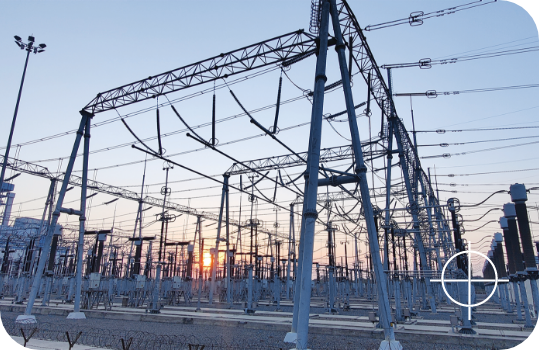
India's power sector is experiencing explosive growth. Currently ranking third in global electricity production with a staggering 428 GW installed capacity (as of December 2023), the country has witnessed an impressive 11 GW increase from the previous fiscal year. Despite significant investments in renewable energy sources (comprising 42% of installed capacity), thermal power remains the dominant force, contributing a substantial 79% to total generation. This highlights the ever-increasing power demand in line with India's robust economic growth. In FY 2023-24, electricity demand surged by 7.9% to reach 1,227 BUs, with peak power demand experiencing a remarkable 12.5% jump to 243 GW.
Vedanta Group is exceptionally well-positioned to capitalise on this flourishing power market. With a robust total portfolio of ~12 GW (combining IPP and CPP capacities), Vedanta currently holds the title of second-largest private player in the Indian power sector. The Company has key IPP assets like Talwandi Sabo plant (1980 MW) and Jharsuguda plant (600 MW). Furthermore, the soon‑to‑be operational Meenakshi (1000 MW) and Athena (1,200 MW) power plants will bolster the Company’s growth. Upon completion of these projects by FY 2025-26, Vedanta's commercial power portfolio is expected to reach a remarkable 4,780 MW, solidifying its position as a dominant player in the thermal power sector.
Several key macroeconomic factors are fuelling this power sector boom in India. India's population is projected to reach a staggering 1.5 billion by 2030, with rapid urbanisation further propelling electricity demand. Additionally, India’s current per capita electricity consumption is significantly lower compared to global averages. At 1300 kWh, it is merely one-third of the world average and one-fifth of China’s consumption. This vast disparity signifies an enormous potential for growth in the coming years.
Looking ahead, the future of India's power sector is shining with exciting possibilities. The government and industry experts anticipate a phenomenal rise in installed capacity, reaching an estimated 800 GW by CY 2030, at a projected CAGR of 11%. This expansion presents a substantial opportunity for private players like Vedanta to play a pivotal role in meeting the nation's growing energy needs.
There is a minimum of ~87 GW of additional thermal capacity addition required in the next 7 years, which presents an enormous opportunity for the industry. In contrast, this is the same quantum of thermal capacity installed in the last 15 years (2007-2022). Furthermore, the CEA has issued an advisory to existing thermal power utilities not to retire or repurpose their plants before 2030, considering the expected power demand. It is noteworthy that thermal power is expected to continue serving as the primary source for baseload demand until efficient and economical RE storage solutions are readily available.
These favourable trends in the power industry, have resulted in an increase in thermal Plat Load Factors (PLFs) across the country to 70% in FY 2023-24 from 66% in FY 2022-23. Additionally, RTC (round the clock) tariffs for power in the power exchanges (IEX, PXIL) have consistently increased, with an average of ₹ 5.4/kWh in FY 2023-24, resulting in better realisations for the power sector.
The global iron ore market in CY 2023 displayed remarkable resilience and adaptability in the face of challenges including price volatility. While prices fluctuated throughout the year, reaching a low in May 2023 due to temporary demand dips, they recovered significantly due to several positive developments. These included:
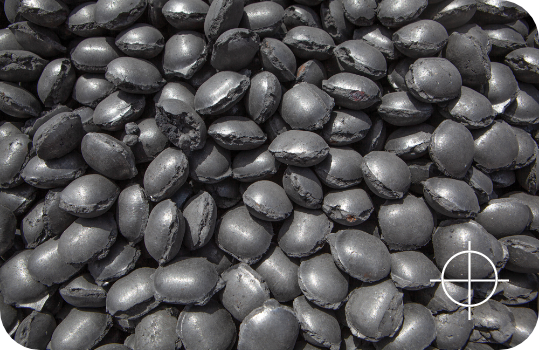
The year ended on a positive note with global iron ore prices averaging US$ 119/t in CY 2024, an increase of 2.5% Y-O-Y.
India, a key player in the iron ore market, witnessed a stellar year in FY 2023-24. Domestic iron ore production reached an all-time high of ~282 million tonnes, reflecting a significant 13% Y-O-Y increase. This growth was mirrored in domestic steel production, which surged by 10% to reach ~139 million tonnes. Additionally, India's iron ore exports rose to a three year high of over 44 million tonnes, showcasing the country's growing importance in the global iron ore landscape.
The Company has established itself as a significant player in the production of iron ore and pig iron, serving the steelmaking, construction, and infrastructure sectors. With a strategic focus on enhancing its mining operations, the Company has successfully increased its output to 5.9 million tonnes per annum (MTPA) of iron ore from its Karnataka mines. In a recent expansion, the Company acquired the FEE grade and BICO iron ore blocks located in Barbil, Odisha, during the fiscal year 2022. These mines became operational in FY 2022-23, contributing an additional 5.5 MTPA to the Company’s capacity.
Expanding its global footprint, the Company commenced operations at the Bomi mine in Liberia. As of 19 March 2024, the mine has produced 0.5 million tonnes of saleable ore, with an ambitious target of 2.5 MTPA set for FY 2024-25. The Company’s reach has grown in India with the acquisition of the Bicholim mine in Goa, which boasts resources of 84.92 MTPA. The Bicholim mine will be operational by the end of FY 2023-24, with a production target of 3 MTPA for FY 2024‑25.
Looking ahead, the outlook for the Indian iron ore sector appears even brighter. Production is expected to climb further, reaching an estimated 330 million tonnes in FY 2024-25, a 17% increase Y-O-Y, fuelled by the operationalisation of new mines and capacity expansions at existing ones. This growth aligns with the National Steel Policy's projections for crude steel production, paving the way for a robust iron ore market in India.
The global iron ore market will likely be influenced by Chinese stimulus policies in the near term, considering China’s position as the largest consumer of iron ore in the world. With China's ongoing economic recovery, marked by a strong infrastructure and export sector balanced against a slump in consumption and property sectors, any stimulus decisions following the April politburo meeting could significantly impact iron ore prices.
India's iron ore beneficiation capacity is also expected to increase in FY 2024-25, reaching 143 million tonnes from the existing 136 million tonnes. This aligns with the government's push for low-grade ore beneficiation, promoting the utilisation of domestic resources and reducing dependence on imports.
While a recent surge in iron ore exports has led to concerns from some small steel producers, the overall outlook for domestic steel demand remains positive. The Indian government's optimistic projections for the country's economic growth further bolster this confidence. With continued growth in domestic production, rising beneficiation capacity, and a strong demand outlook, India is well-positioned to be a major force in the global iron ore market for years to come.
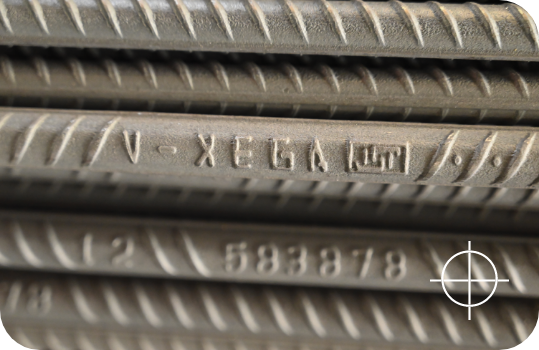
India is the second-largest steel producer in the world with steel as one of India’s core industries, contributing more than 2% to the GDP. In FY 2023-24, India’s crude steel production is expected to increase by ~14% on a yearly basis with crude steel production at ~143 million tonnes.
The government’s emphasis on infrastructure development and affordable housing has led to an increase in finished steel consumption which is expected to grow by ~14% to 135 million tonnes in FY 2023-24. Backed by a slew of initiatives, including the National Infrastructure Pipeline (NIP) and PM Gati Shakti National Master Plan (NMP), India’s per capita steel consumption jumped to 87 Kg per capita in FY 2023‑24 from 77 Kg per capita in FY 2022-23. As per the National Steel Policy, steel consumption is projected to reach 158 Kg per capita by FY 2030-31 with a capacity of 300 million tonnes.
With subdued global demand, prices of steel products reduced globally, along with an increase in exports from China. India is likely to remain a net importer of steel in FY 2023-24 which has impacted domestic prices as well.
ESL Steel Limited boasts a state-of-the-art integrated steel plant with a capacity of 1.7 MTPA, supported by its own captive mines in Odisha and a coke oven plant.
The Company has a robust and diversified product portfolio, offering TMT rebars, wire rods, ductile Iron pipe, billet and pig Iron to its customers. With ongoing projects, the plant’s capacity is expected to reach 3 MTPA by FY 2024-25.
In FY 2023-24, the Company achieved its highest‑ever finished sale of 1.4 MTPA (~11% increase Y-O-Y) supported by strong domestic demand for steel and pipe segment. The Company consistently prioritises the sales of value‑added grades and developed various new grades during the year, achieving its highest ever (~75%) sales of high carbon and alloy grade in Wire Rod. ESL has achieved its highest ever Ductile Iron pipe sales of ~0.21 million tonnes in FY 2023‑24, supported by robust demand and product optimisation.
In the TMT segment, the Company has received various key approvals. With the UK CARES quality certificate in place for TMT, the Company has made its first-ever export shipment to Tanzania. With its vision to reach the last customer and expansion underway, the Company conducted a national retail launch from Bihar in October 2023, garnering media coverage and attended by 250+ engineers, dealers and influencers.
The government has been focussed on its vision of achieving a steel capacity of 300 million tonnes by 2030, and this commitment was evident in the increased capital expenditure outlay by 11.1% to ₹ 11.11 lakh crore in the Interim Budget FY 2024-25.
Driven by an unwavering commitment to make India a US$ 5 trillion economy, initiatives such as ‘Make in India’, Pradhan Mantri Awas Yojna and PLI Schemes are propelling the growth of the country. With increasing disposable income, urbanisation and a strong impetus to infrastructure development, steel demand is expected to remain robust in the coming year.
In FY 2024-25, the government will maintain its focus on the infrastructure, construction and auto sectors. 2 crore additional houses have been planned in the next 5 years under the PM Awas Yojana, while 3 new Economic corridors have been sanctioned under the PM Gati Shakti, and various new airport developments have been planned in the UDAN scheme. Furthermore, the reduction in import duties for machine parts used in producing Li-ion batteries for electric vehicles will boost the auto industry and consequently, steel consumption. Additionally, the government has prioritised ensuring clean and safe water supply in India through various schemes such as the Jal Jeevan Mission and Amrut, with an allocation of over ~₹ 1 lakh crore in FY 2023-24.
High Carbon Ferro Chrome (HCFC) is pivotal to the global stainless-steel industry, enhancing its non-corrosive, durable, and temperature-resistant qualities. Over 85% of HCFC production is dedicated to stainless steel manufacturing, indicating that a flourishing stainless-steel sector is a bellwether for strong HCFC demand.
Asia, with China at the helm, dominates the HCFC landscape, accounting for 85% of consumption and holding substantial chromite ore reserves, the essential raw material. Although South Africa is the premier chromite ore supplier worldwide, China’s leadership in HCFC production positions it as a dominant force in shaping global market dynamics and pricing structures.
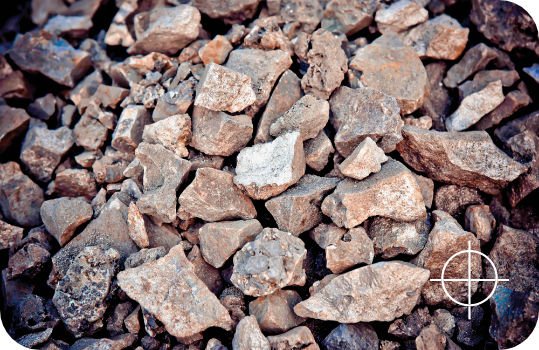
India is playing a significant role in the HCFC market, securing the position as the world’s fourth-largest producer with an output of ~1.3 million tonnes in CY 2023. India’s HCFC market is characterised by an export orientation, with ~60% of its production being exported.
Despite a downturn in international HCFC prices in FY 2023‑24, attributed to subdued purchasing in China and Europe, India’s domestic market demonstrated remarkable resilience. International prices may have receded to US$ 1,183/mt by Q4, but India’s domestic prices saw a significant rebound, averaging US$ 1,364 from December 2023 to February 2024, underscoring a robust internal demand.
Ferro Alloys Corporation (FACOR) stands out in the domestic HCFC sector, ranking as the fourth-largest supplier amidst a predominantly export-oriented industry. In FY 2023‑24, FACOR channeled 85% of its HCFC production to meet the needs of domestic stainless steel and alloy steel manufacturers.
FACOR is also strategically augmenting its Value-Added Products (VAP) portfolio, thereby securing a competitive edge to serve specialised markets in Europe and South Korea. Looking forward to FY 2024-25, FACOR’s strategy is geared towards amplifying production volumes and expanding its market presence, both domestically and globally.
At our Ferroalloy business, our strategic emphasis remains on capacity expansion, domestic sales, VAP development, and international market expansion. We are ideally positioned to thrive in this dynamic market landscape.
With India’s solid domestic market and the anticipated global upswing in stainless steel production, the outlook for HCFC is optimistic. With increasing infrastructure initiatives in developing nations and an expected resurgence in demand from China, stainless steel production is projected to grow steadily by 4-5% in the upcoming year. This growth trajectory is set to catalyse HCFC demand worldwide, with production forecasts suggesting an increase of 3-4%.
India, however, is on track to surpass the global growth rate, emerging as the fastest-expanding market for both stainless steel and HCFC production. The anticipated 7-8% growth is propelled by the Indian government’s substantial investment in infrastructure development. Moreover, India’s per capita consumption of stainless steel is poised for a significant uptick, mirroring the expanding domestic HCFC market.
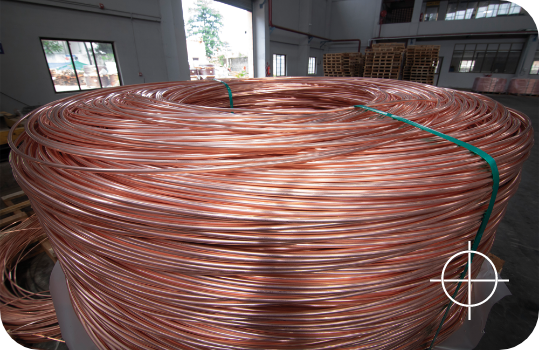
FY 2023-24 was a dynamic year for the copper market. While global consumption, particularly in China, navigated a period of moderation, India's copper market emerged as a robust and promising space. Notably, the latter part of the year witnessed a resurgence in LME copper prices, driven by a combination of supply disruptions and a positive shift towards renewable smelting methods.
India's refined copper consumption witnessed a stellar 26.6% increase in CY 2023. This surge was fuelled by several key growth drivers, including the electrification of the transportation sector, increased use of copper in construction activities, and industrial expansion spurred by the PLI scheme. Additionally, a rise in consumer durables like air conditioners and electronics further bolstered demand.
It is noteworthy that ~40% of India's domestic copper consumption fuels the building and infrastructure sector, while another 11-13% caters to the consumer durables and automotive industries. While India's domestic copper production has faced some limitations, the vibrant economy continues to flourish. This gap is being effectively bridged by a rise in refined copper imports, a trend projected to continue in the near future.
The Company, with its strong presence, product diversification, and focus on innovation, is well-positioned to capitalise on the lucrative opportunities in the industry. As one of the largest copper producers in India with a diverse product portfolio, the Company caters to a wide range of customers, including housing wire, winding wire and cable, transformer, and electrical profile producers. Its commitment to new product development further strengthens its market position. Notably, the Company holds a significant 20% market share in India and is actively exploring export markets, particularly in neighbouring countries and the Gulf region. Additionally, its focus on developing green copper production methods underlines its commitment to sustainability and long‑term competitiveness.
India's copper demand is projected to reach a staggering 3 million tonnes by CY 2030, with an estimated increase of ~9.5% expected for CY 2024. This growth will be driven by key sectors such as building and construction, manufacturing, transportation, and consumer durables. The burgeoning Electric Vehicle (EV) segment, with its inherently higher reliance on copper compared to traditional vehicles, is poised to be a major catalyst for demand.
Looking ahead, several factors contribute to the positive outlook for the Indian copper market: